The Lower Hudson River Valley, shouldered by its scenic rolling hills, is a repository for art, architecture, literature and legend. A savvy traveler staying in Manhattan has only a thirty-minute ride to Irvington, NY. The bucolic village, whose Main Street slowly descends to the Hudson River, is best known for Lyndhurst, the 1880, over-the-top mansion of railroad robber baron, Jay Gould. Sunnyside, in its shadow, is the more diminutive estate of author and town namesake, Washington Irving.
A more discerning road warrior might prefer to spend time at the Armour-Stiner house, known more descriptively as Octagon House. As you wend your way along the driveway to the estate, there’s the slow reveal of the perfectly appointed landscaped grounds, which brilliantly frame the five story home: in no way does this first impression upstage the majesty of the soon to be seen stately mansion. At first glimpse, the home looks like a larger than life ornament, or a brightly colored carousel whose horses had fled the wrap-around verandah.
While the exterior of the home is certainly a head turner, this architectural style was not unique; there were hundreds of these eight-sided structures scattered across the country in the middle of the 19th century. The impetus for the design was Orson Squire Fowler, and the publication of his 1848 book, “The Octagon House, a Home for All.” Fowler was a free spirit, questioning the conventional wisdom of having a four sided domicile when you can have one with eight sides, incorporating more “square” (if you will) footage, within the octagonal shape. In turn, additional sides lead to more windows, hence more light.
The preliminary construction of what would become the Armour-Stiner house was completed in 1860 under the direction of Paul J. Amour, a Manhattan financier. If you consider the house you see now to be an ornately constructed wedding cake, Armour could be credited with laying down the first two octagonal layers of that cake. Paul Armour died in 1866, and six years later his widow sold the estate to Joseph H. Stiner for $27,000. Stiner was a successful Manhattan tea merchant. He had deeper pockets than Armour and upon taking possession of the home, acquired additional surrounding property from James Alexander Hamilton, the president’s son. Stiner shored up the existing structure and capped it with a two story dome and observatory, which harkens back to the Tempietto by Donato Bramante built in Rome in the early 1500s.
Joseph Stiner additionally provided the house with a wider welcoming girth in the form of a magnificent wrap-around verandah, with a replica head of his show dog, “Prince,” prominently affixed to the railings that encircle the porch. Stiner also applied a half dozen shades of color to the exterior of the mansion, accentuating cresting, consoles and shutters, among other details. Joseph Stiner’s wife, Hannah, died in 1881, and one year later, he sold the property for $22,250, at a loss of nearly five thousand dollars.
Between 1882 and 1978, the property changed hands five times. In 1940, at a time when the house was owned by noted chemist Dr. Erwin Brand, it was foreclosed upon to satisfy a tax lien and much of its contents were auctioned off to satisfy the debt. One year later, Octagon House was purchased by one of this country’s most successful advertising executives, John P. Cunningham. Cunningham understood the concept of legacy and safeguarded the over-sized pieces of furniture that were not purchased at auction. He took that a step further by willing the furniture back to Octagon House. In 1946, the house was purchased by noted author and historian Carl Cramer, who on a whim, bought Armour-Stiner estate, without his wife ever seeing it.
The Cramers lived on the Irvington estate for nearly 30 years before putting it up for sale. Before it could be sold, the title to the house was taken over by the National Trust for Historic Preservation and subsequently moved to the National Registry of Historic Places in 1976. The move was to stave off any unscrupulous buyers or speculators bent on tearing down the mansion and subdividing the property. In return, the National Trust for Historic Preservation established a list of items that needed to be repaired in any sale to a prospective buyer. The item topping that list was the building’s dome, which had shifted over time and was being precariously supported by Armour’s original two story frame.
After a brief negotiation, Joseph Pell Lombardi, a New York City resident, who spent his high school years in Irvington, purchased the home. It was the first house to be resold by the National Trust for Historic Preservation to a private citizen, and the home finally got what it had been lacking for over a hundred years—an architect. More than that, Lombardi is a developer and preservationist. By his own account, he and his firm have been involved in the conservation and/or conversion of over one thousand properties worldwide. While few of the contents of Octagon House are original, aside from a bathroom and kitchen, Joseph Lombardi and his son Michael brought to the house some of the finest furnishings of the post-Civil War era they were able to acquire.
To tour the house and grounds is to witness a labor of love. As you enter the home, you’re greeted with a staircase ascending to the upper floors. To the right of the caryatid, you will no doubt be tempted to walk down the hall and admire the Renaissance Revival influence in the dining room. The salon, where a ceiling fresco brightens the carefully positioned furniture below, exemplifies Paul J. Amour’s vision of the octagonal design allowing more space and light. There is a room in the house which is a bit of an anomaly, and that’s the Egyptian Music Room, an homage to the Egyptian Revival beginning in the late 1880s. Putting an exclamation mark on the room’s decor is a frieze depicting servants readying boats for travel to the afterlife.
There are knick knacks and curios throughout the house, even a depiction of famous fictional neighbor, Ichabod Crane. As for more octagonal shapes on the premises, well, that can be captured in a bird feeder just outside the salon and in an eight-sided bird bath within the greenhouse.
Tours of the house and grounds got underway in 2019. With the pandemic limiting the number of visitors at that time, you might be the first on your block to grab bragging rights.
For more information: www.armourstiner.com
By Tom Farkas

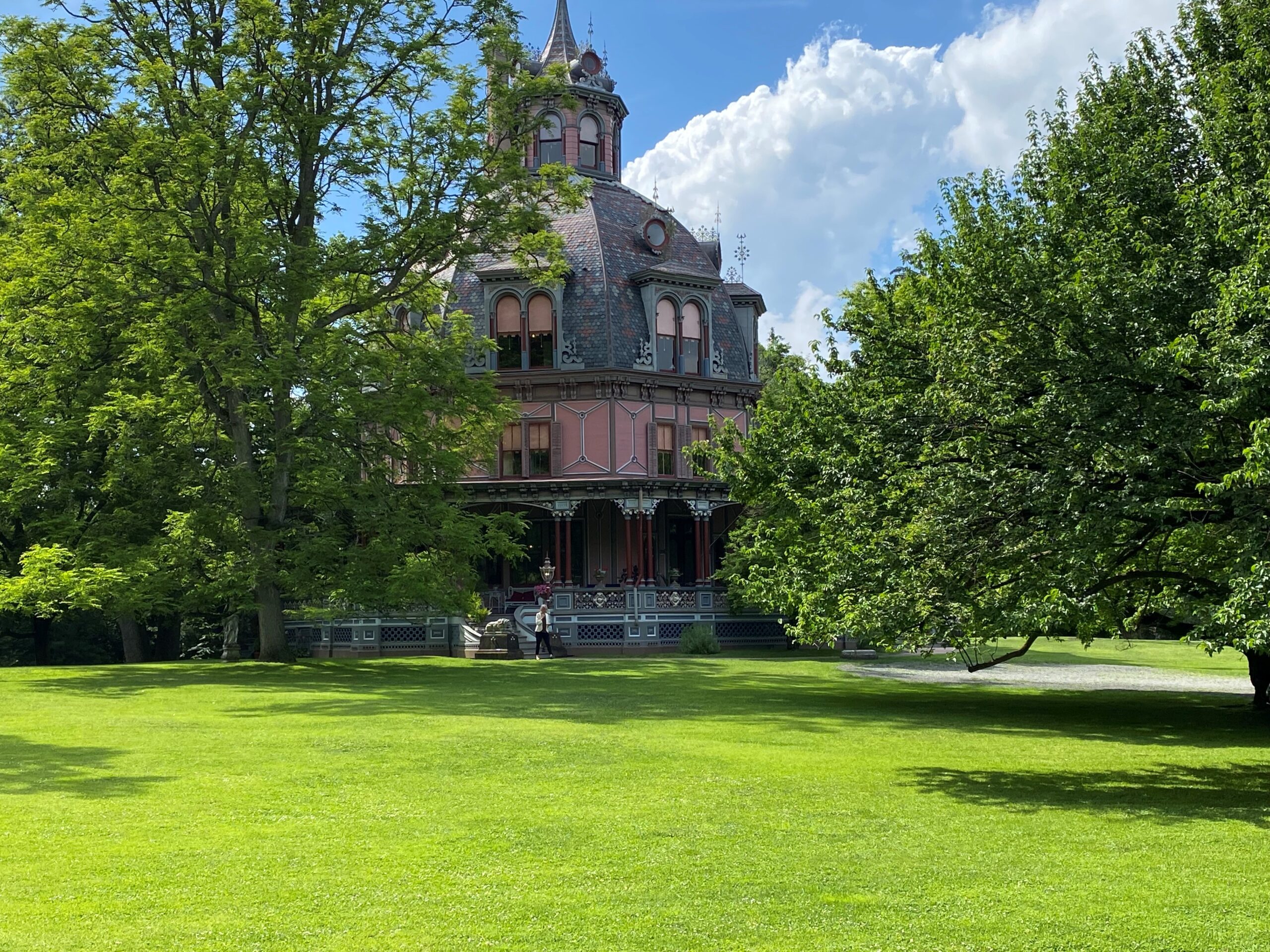
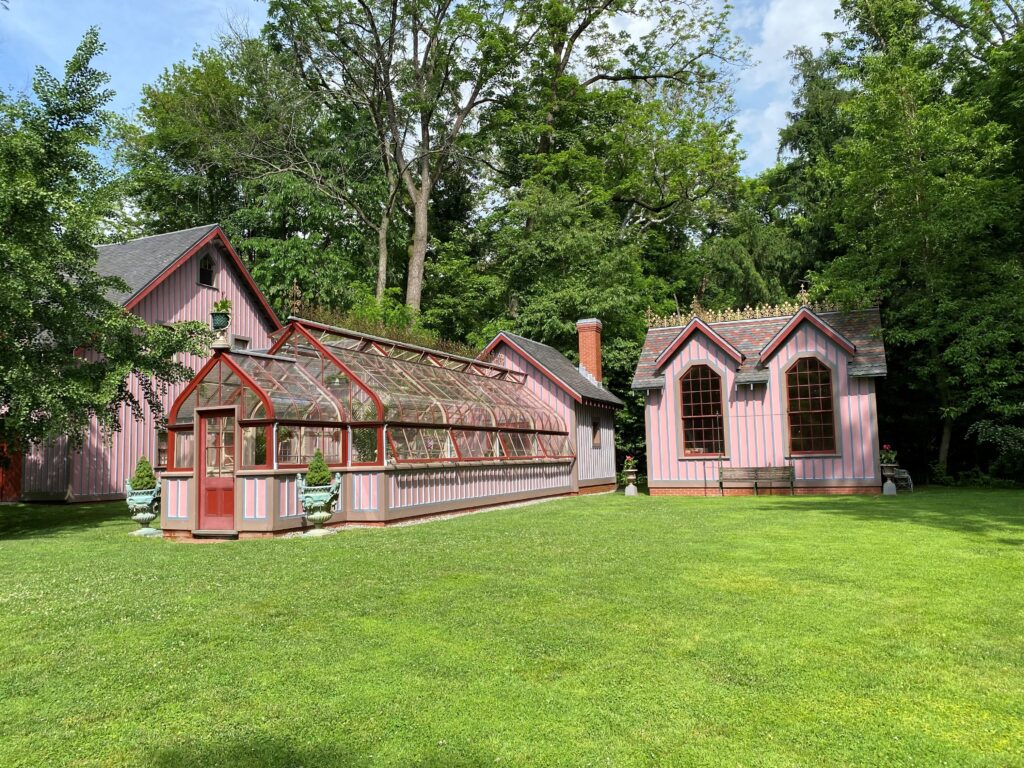
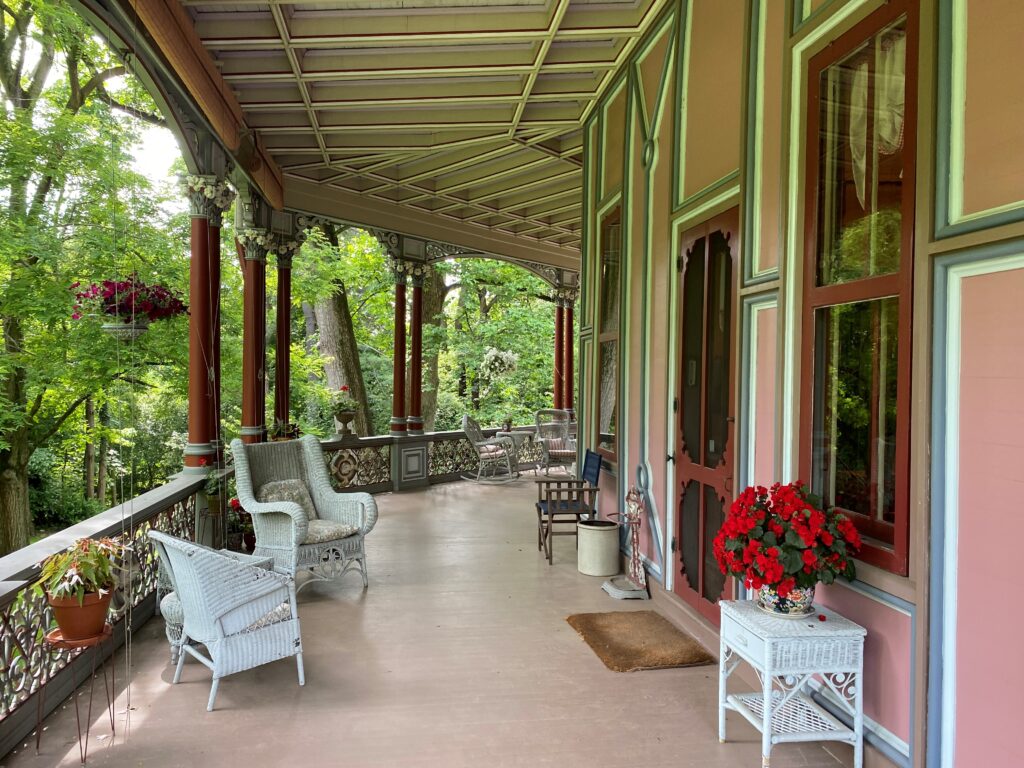
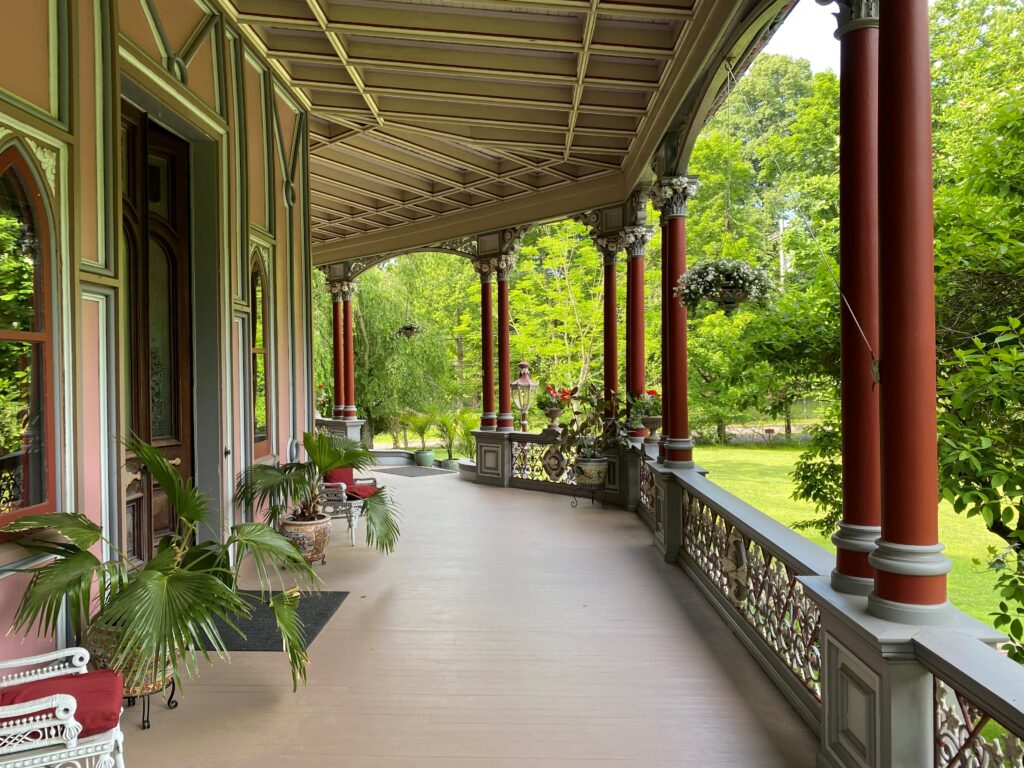
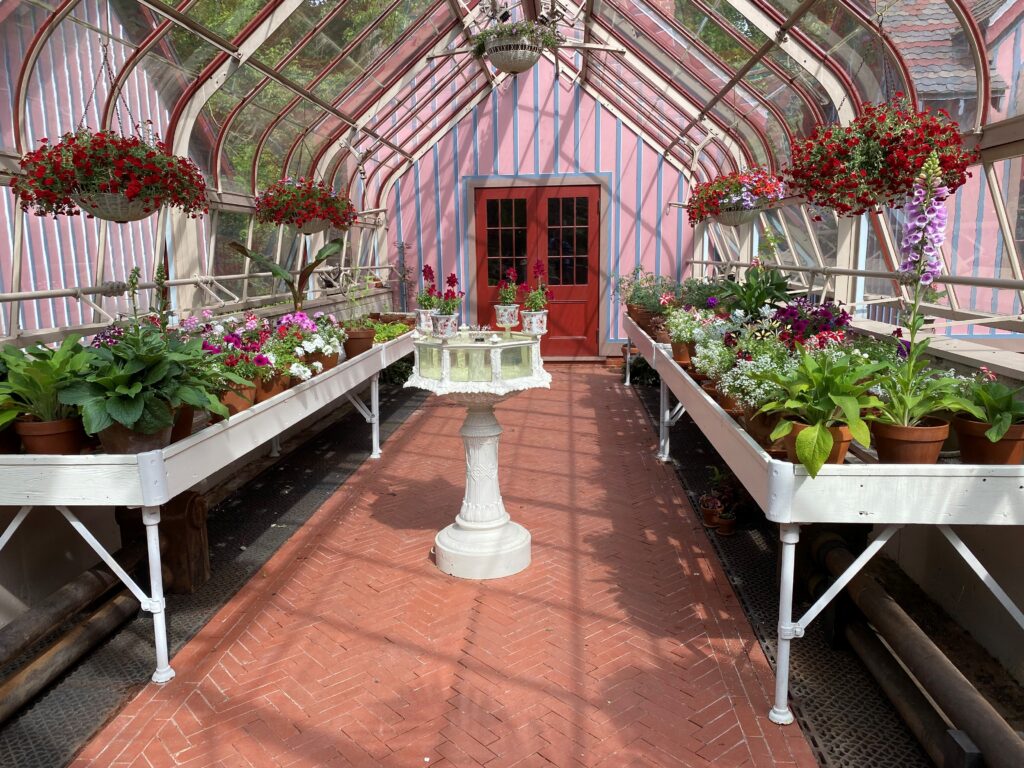
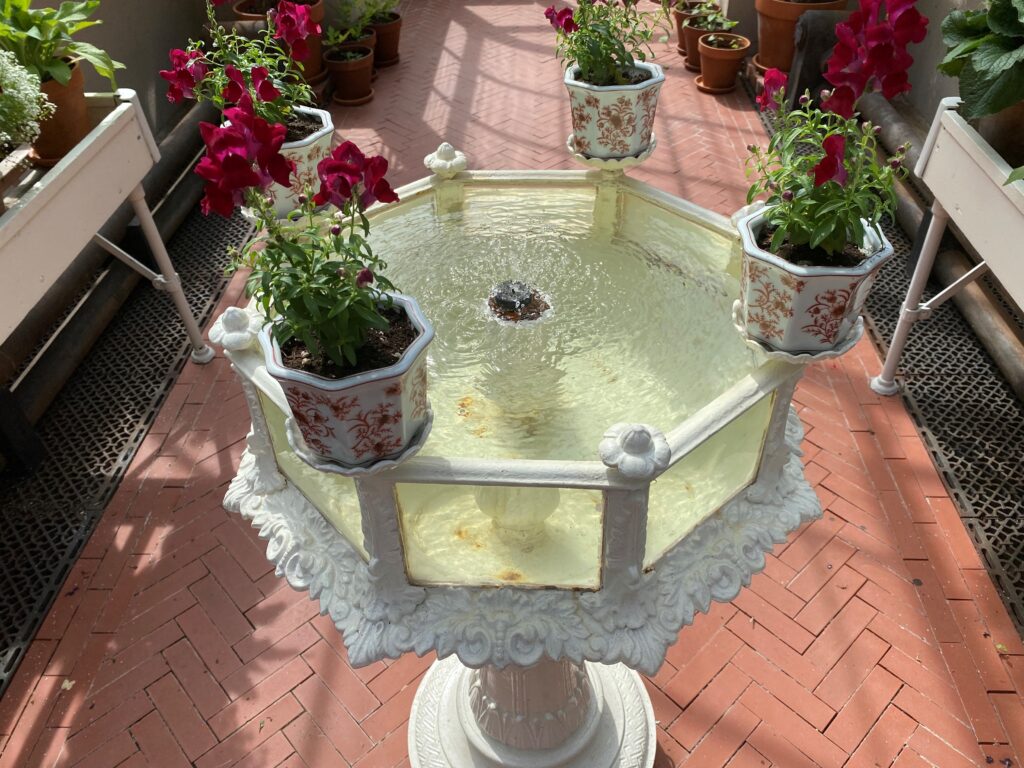
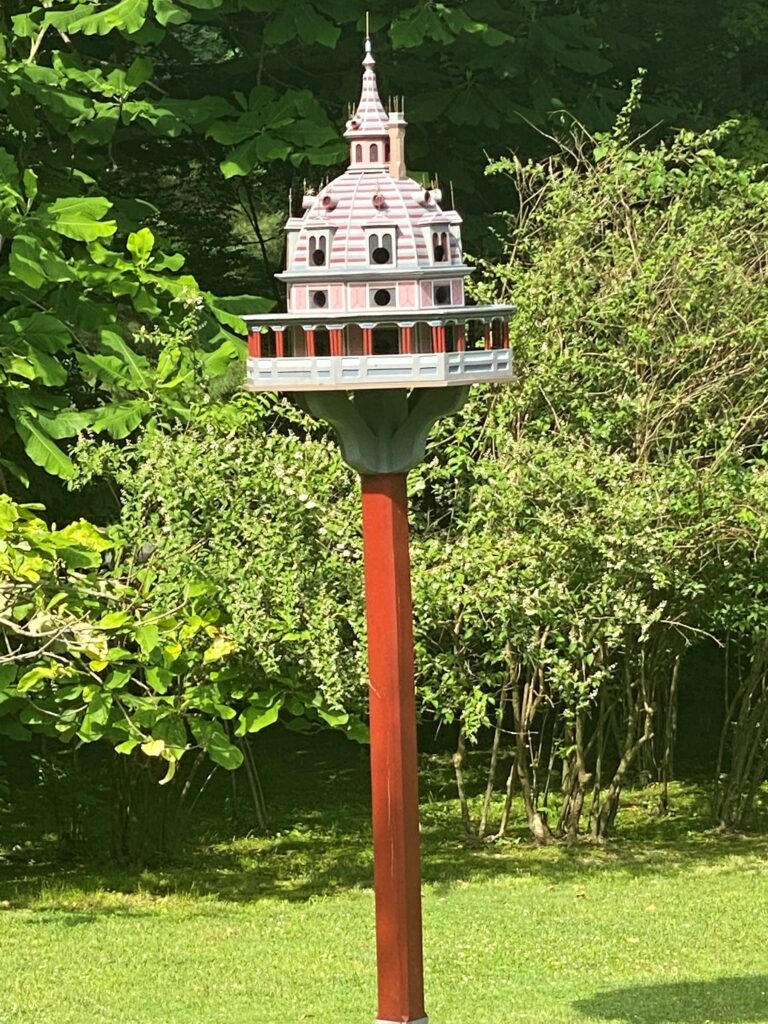
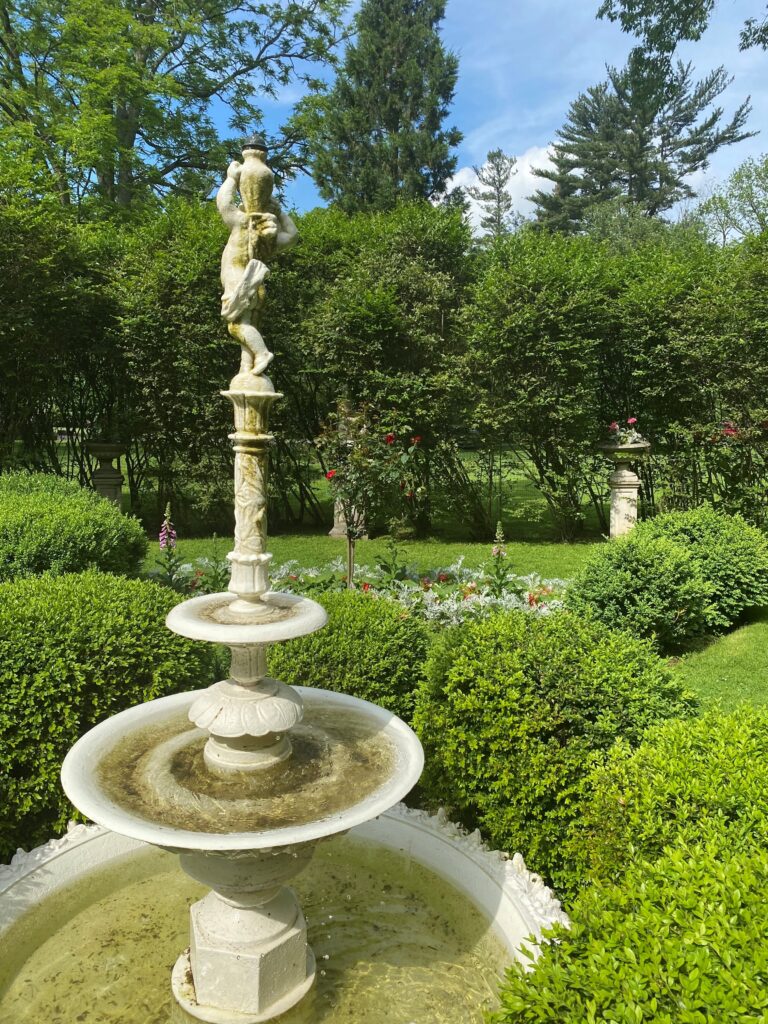
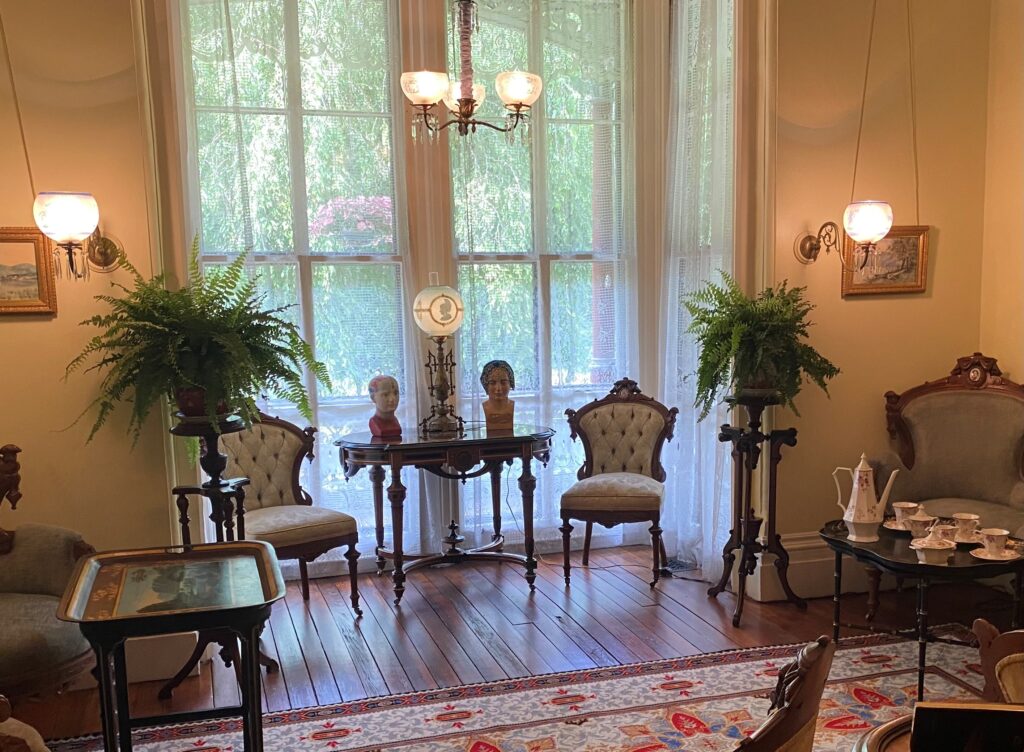
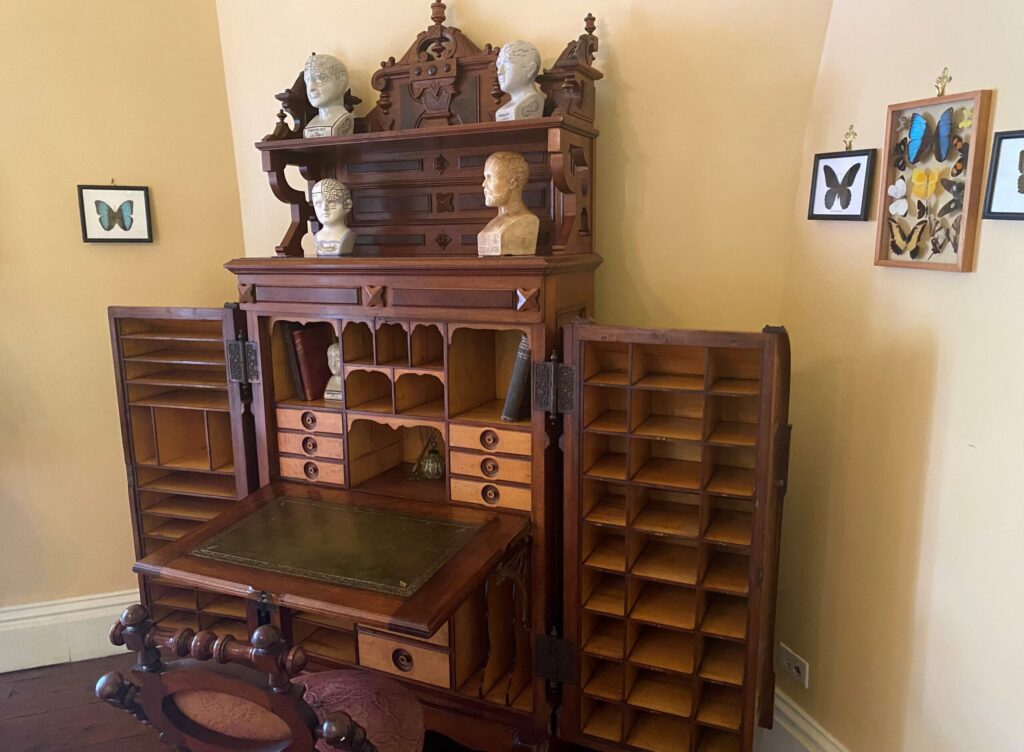
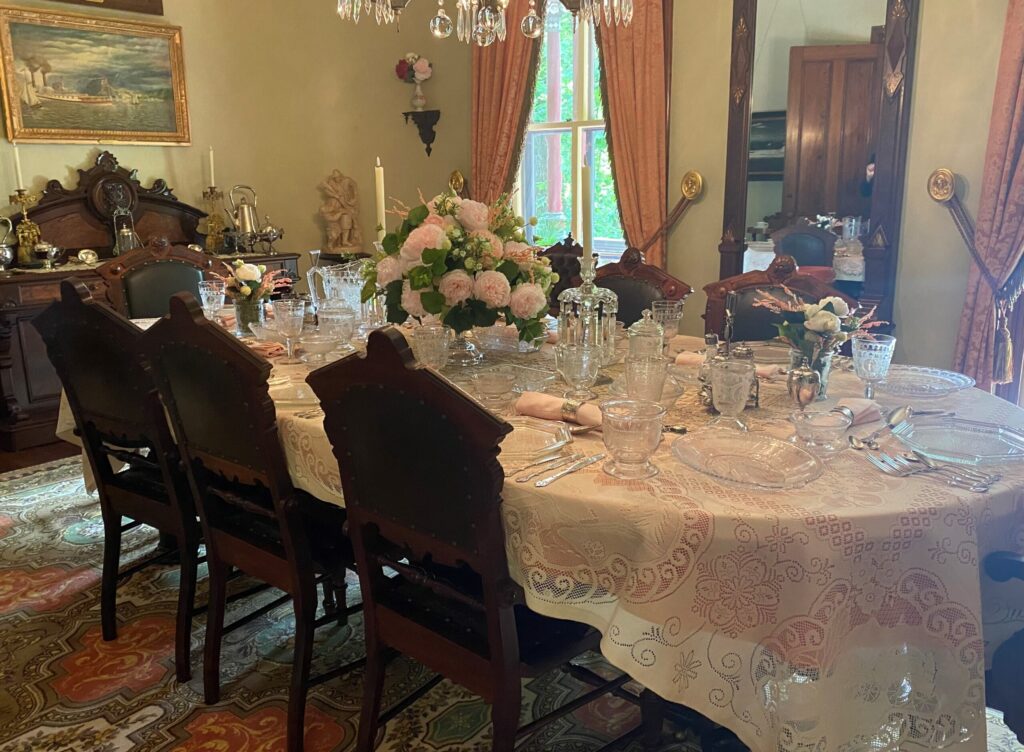
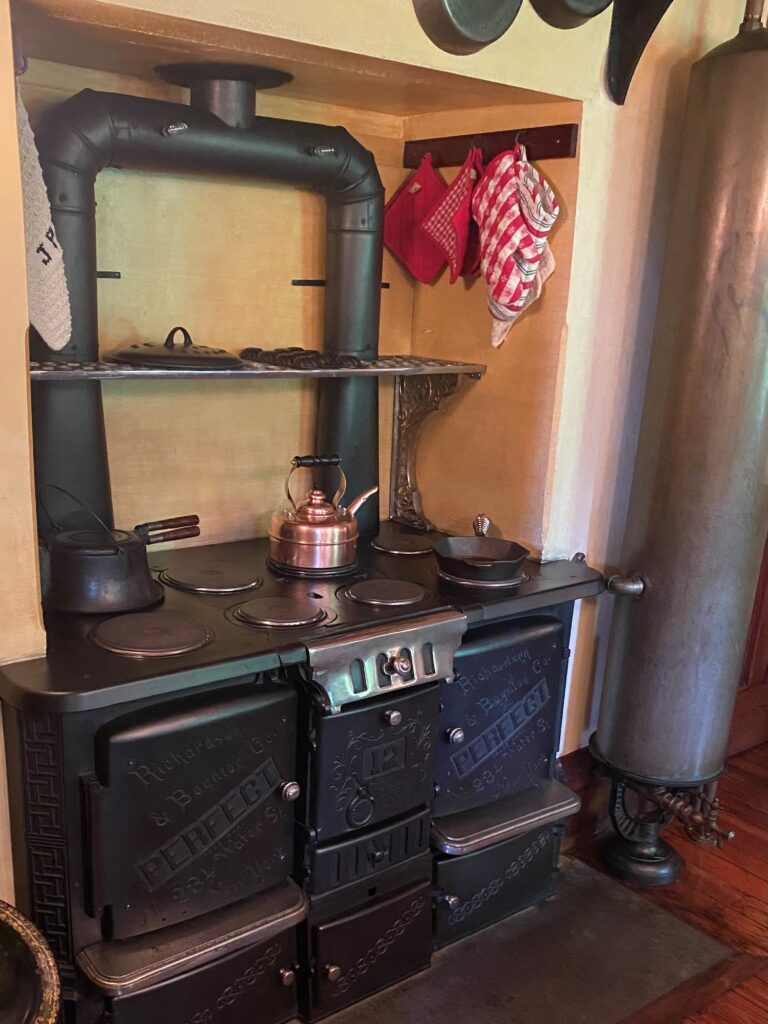
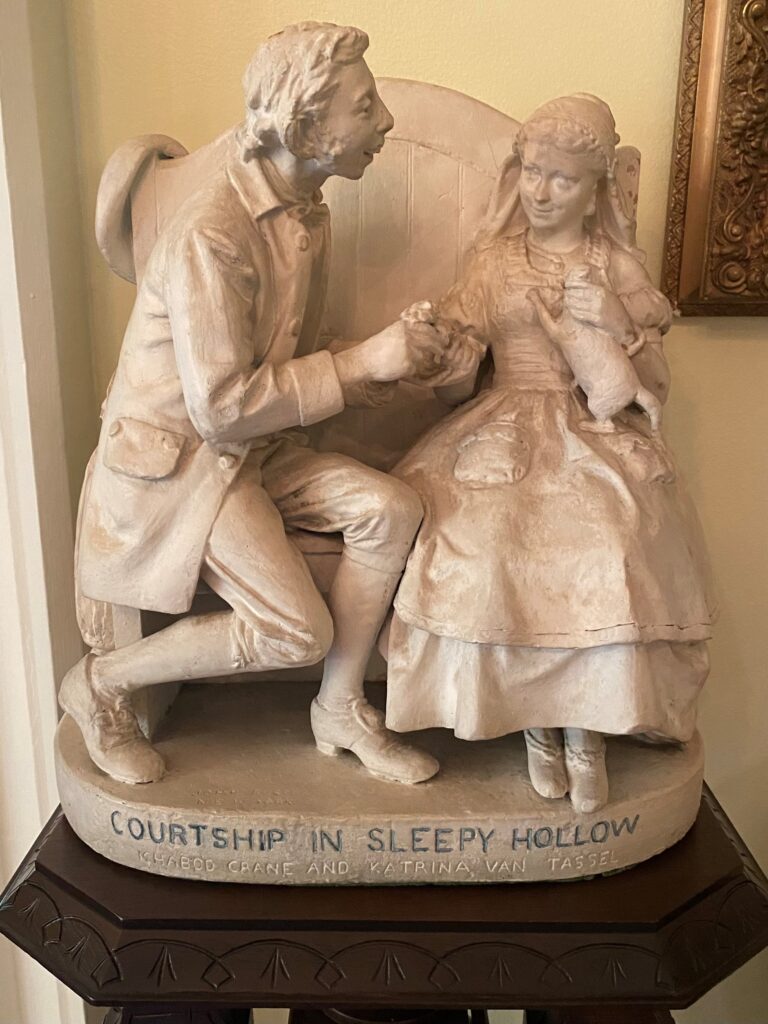
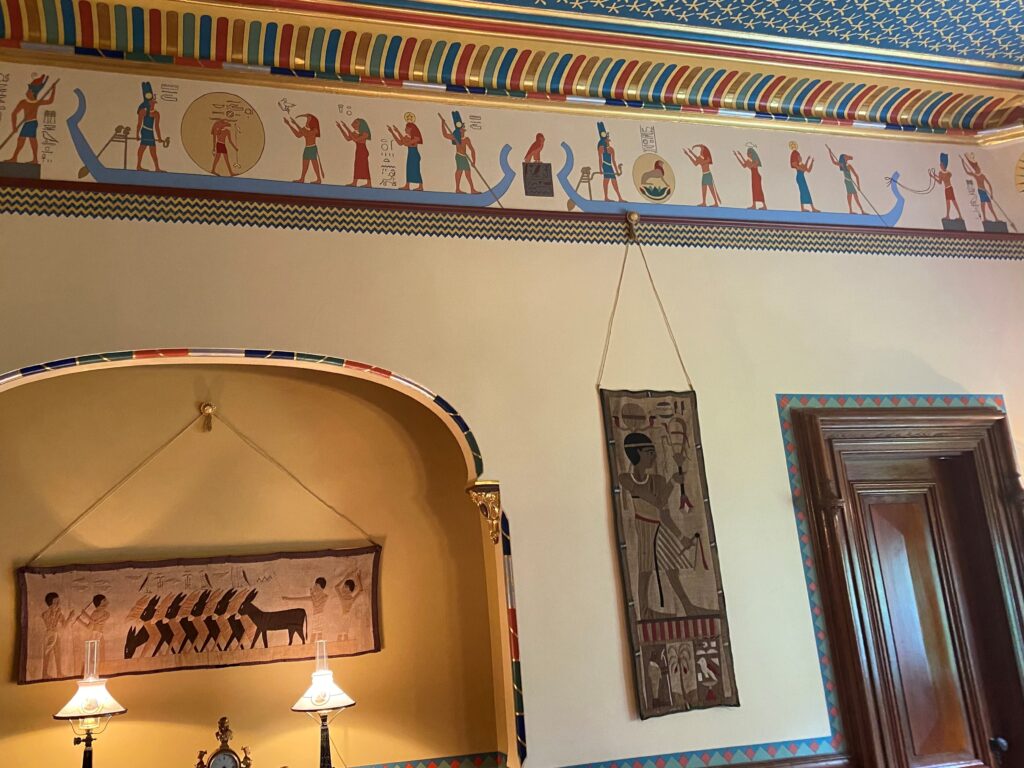
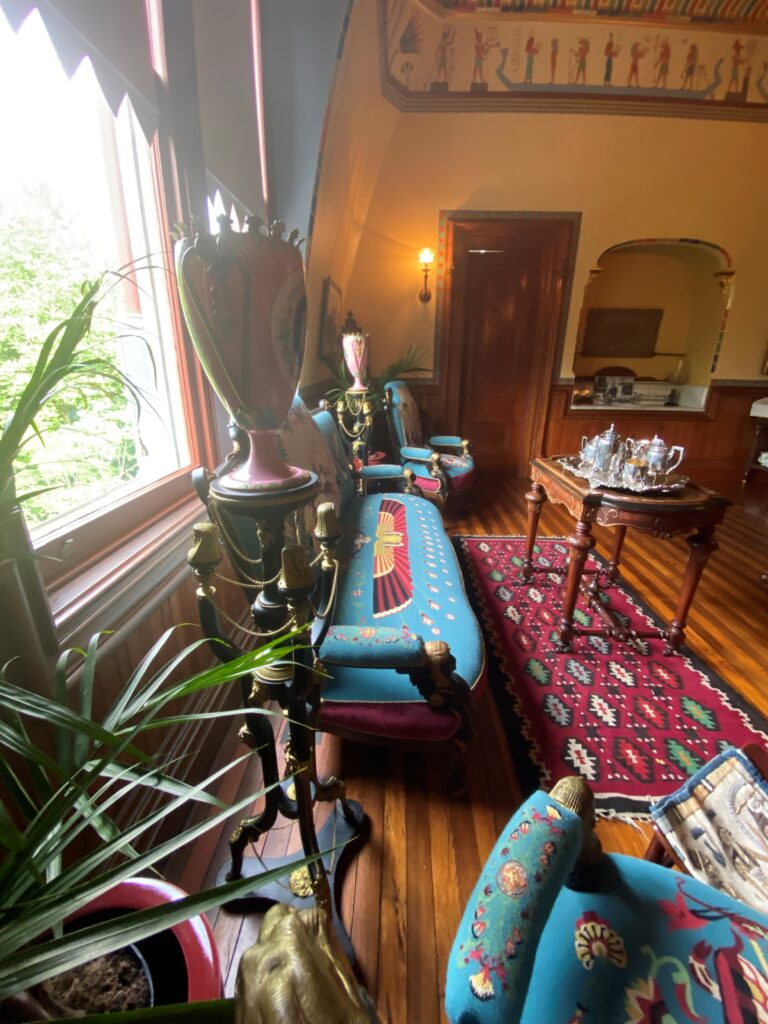
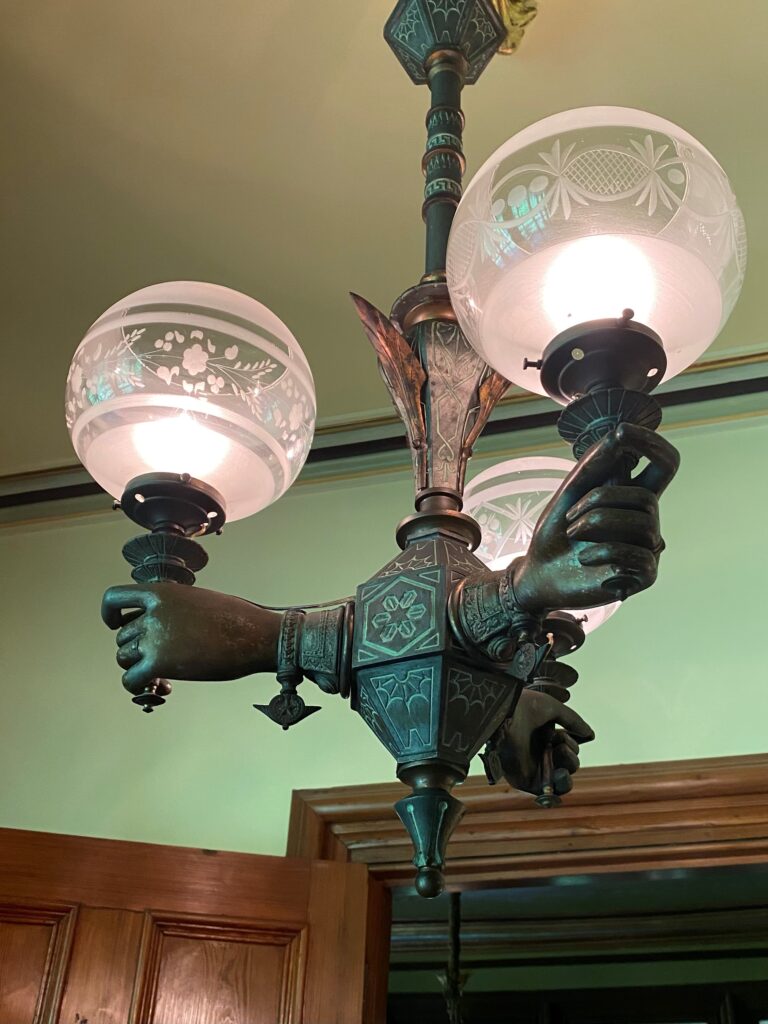
Alaxander Hamilton was never president of the US, James would not be the son of a president.
Can’t wait 4 a visit. There is a small octagon shaped in Hoosick, NY, and one other one on Lake st. Catherine, located on the south side close 2 Wells village in Vermont. Thanks again 4 regional culture. C.L. CAHN.
Lovely article and photos! But a quick FYI, the fellow who sold the building to the Trust was Carl Carmer, not Cramer.
Thanks!
The writer’s lucid and flowing prose is a fit ornament for this curious dwelling. Well done!
The correct name of the author who owned the house before it was acquired by the National Trust was Carl CARMER.
Went today a lecture on octagonal houses. The Armor Stiner house was certainly the most elegant surviving example of that style. My sister in law lives in Irvington. Would hope to visit the grounds and house in the spring. Will the house be open for visitors?